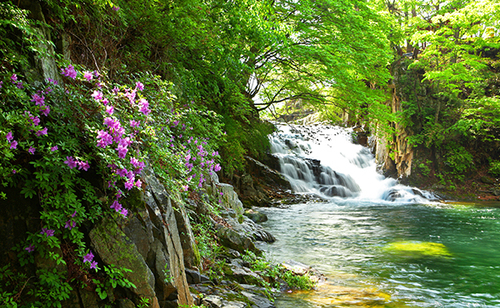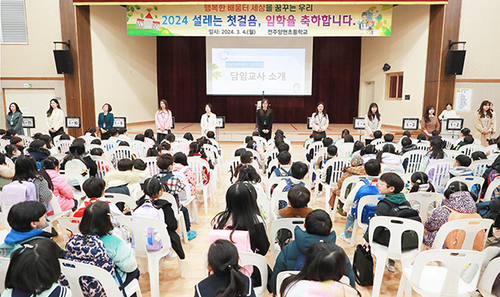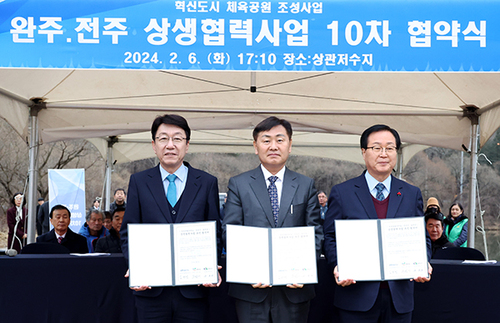| ▲ 국내에서 가장 크고, 가장 오래된 석탑(국보 제11호)을 품고 있는 100년 전 전북 익산의 미륵사지를 살펴볼 수 있는 사진을 오는 15일부터 내년 3월 28일까지 감상할 수 있다. / 사진제공 = 국립익산박물관 © 김현종 기자 |
|
국내에서 가장 크고, 가장 오래된 석탑(국보 제11호)을 품고 있는 100년 전 전북 익산의 미륵사지를 살펴볼 수 있는 사진을 감상할 수 있다.
특히, 1915년 미륵사지 석탑 수리 당시 사용됐던 보강철물(H빔)과 콘크리트 부재와 공사 도면(청사진 = 靑寫眞)이 최초로 공개된다.
국립익산박물관은 "코로나19 바이러스 감염병 여파로 박물관을 찾을 수 없는 관람객들을 위해 '3D VR 온라인 전시실ㆍ미륵사지 다른 그림 찾기 게임'등 다채로운 온라인 전시 콘텐츠들을 홈페이지에 공개해 집에서도 전시를 즐길 수 있도록 오는 15일부터 내년 3월 28일까지 '100년 전 사진에 담긴 미륵사지 1,300년'을 개최한다"고 14일 밝혔다.
이번 전시는 2017년 '일제강점기 사진으로 보는 익산의 문화유산'보고서 결과물을 토대로 기획됐으며 총 3부로 구성됐다.
제1부는 '미륵사지, 세상에 드러나다'를 테마로 1910년 일본의 문화재 조사 사업으로 동아시아 고대사원의 면모가 드러난 미륵사지의 첫 사진을 소개한다.
일제강점기 문서에 드러난 일본인 연구자들의 조사 내용과 평가 기록을 바탕으로 미륵사지가 당시 어떤 모습이었는지 살펴볼 수 있다.
제2부 '석탑, 시멘트로 보수하다'는 첫 조사 후 5년 뒤인 1915년 미륵사지 석탑을 응급 수리한 기록이 담겼다.
밑그림이 남아있는 설계도면의 청사진(靑寫眞)뿐만 아니라 미륵사지 석탑 수리 과정에 사용된 보강철물(H빔)과 콘크리트 부재는 당시 일본 문화재 수리 기술의 시험 무대가 되었음을 알 수 있다.
제3부 '미륵사지, 가까이 보다'는 100년 전 일본인들이 바라본 미륵사지의 모습으로 구성됐다.
당시, 조선인을 기준(Human-scale)으로 삼아 문화재와 함께 촬영해 크기를 가늠할 수 있도록 때마다 석탑을 같은 방향에서 촬영해 과거로부터 변화하는 옛 미륵사지 풍광은 놓치지 말아야 할 볼거리다.
일제강점기 시작부터 광복 전까지 문화재 조사를 위해 익산을 찾은 일본인 학자들은 사진과 글로 미륵사지를 담았다.
이 기록은 당시 문화재를 바라보는 시각을 고스란히 전해 자료적 가치가 매우 높다.
전시에 사용한 흑백사진은 일제강점기 조선총독부가 필름이 나오기 전 촬영한 유리건판(Gelatin dry plate = 지금의 필름에 해당) 사진을 고화질로 스캔한 것이다.
국립중앙박물관은 일본인들이유리건판으로 촬영한 전국의 우리 문화재 사진 38,170점을 소장하고 있다.
전북지역을 촬영한 사진은 307점이 남아있는 가운데 익산지역 사진 84점 가운데 미륵사지는 27점이 전해진다.
국립익산박물관 신민철 학예연구사는 "향후 미륵사지뿐만 아니라 일제 강점기 사진에 담긴 문화유산에 관한 연구를 지속할 예정"이라며 "이번 전시를 통해 100년 전 미륵사지를 담아낸 오래된 기억을 감상하는 시간을 통해 당시 문화재가 마주한 관리 혹은 선전을 위한 조사의 모습 속 현실에 대한 의미를 되새기는 시간이 되기를 기대한다"고 말했다.
☞ 아래는 위 기사를 구글 번역이 번역한 영문의 '전문'이다.
【Below is the 'full text' of an English article translated from the above article with Google Translate.】
Held '2020 Theme Exhibition' at the National Museum of Iksan
Until March 28 next year... Mireuksaji, 100 years ago, left in black and white
Reporter Kim Hyun-jong
You can enjoy a picture of the Mireuksaji in Iksan, Jeollabuk-do 100 years ago, which holds the largest and oldest stone pagoda in Korea (National Treasure No. 11).
In particular, reinforcement hardware (H-beam), concrete members, and construction drawings (blueprint = 靑寫眞) used during the repair of the stone pagoda at Mireuksaji in 1915 will be released for the first time.
The Iksan National Museum of Korea released a variety of online exhibition contents such as "3D VR online exhibition room and Mireuksaji other picture finding game" on the website for visitors who cannot find the museum due to the aftermath of the corona 19 virus infection, so that they can enjoy the exhibition at home on the 15th. From March 28 next year,'Mireuksaji 1,300 years in the picture 100 years ago' will be held.'
This exhibition was planned based on the results of the 2017 report on'Iksan's Cultural Heritage through Photos of the Japanese Colonial Period' and consists of three parts.
Part 1 introduces the first photo of Mireuksaji, which reveals the aspect of an ancient temple in East Asia as a Japanese cultural property research project in 1910 under the theme of'Mireuksaji, Revealed to the World'.
It is possible to examine what Mireuksa-ji looked like at the time based on the survey contents and evaluation records of Japanese researchers revealed in documents during the Japanese colonial period.
The records of the emergency repair of the stone pagoda at Mireuksaji Temple in 1915, five years after the first investigation of the second part,'Stone Pagoda, Repair with Cement,' were included.
It can be seen that the reinforcement hardware (H-beam) and concrete members used in the repair process of the stone pagoda at Mireuksaji, as well as the blueprint of the blueprint of the design drawing with the sketch remaining, became a test stage for the repair technology of Japanese cultural properties.
Part 3,'Mireuksaji, Look Closer' is composed of the image of Mireuksaji as viewed by the Japanese 100 years ago.
At that time, taking pictures with Koreans as the standard (Human-scale) and taking pictures together with cultural properties, each time the stone pagoda is photographed in the same direction, the scenery of the old Mireuksaji, which changes from the past, is not to be missed.
Japanese scholars who visited Iksan to investigate cultural properties from the beginning of the Japanese colonial period until the liberation period captured Mireuksaji in photos and writings.
This record conveys the perspective of viewing cultural properties at the time, and is of very high material value.
The black-and-white photos used for the exhibition were high-quality scans of a glass dry plate (Gelatin dry plate = equivalent to the current film) taken by the Joseon Governor General during the Japanese colonial rule before the film was released.
The National Museum of Korea holds 38,170 photos of Korean cultural properties from all over the country, taken by Japanese with glass plates.
There are 307 photos of Jeonbuk region left, and Mireuksa Temple is said to have 27 out of 84 photos from Iksan region.
Curator Shin Min-cheol of the National Museum of Korea said, "We will continue to study not only the Mireuksaji but also the cultural heritage contained in the photographs of the Japanese colonial era." "I look forward to this time to reflect on the meaning of reality in the appearance of the management or the investigation for propaganda."





















 많이 본 뉴스
많이 본 뉴스











